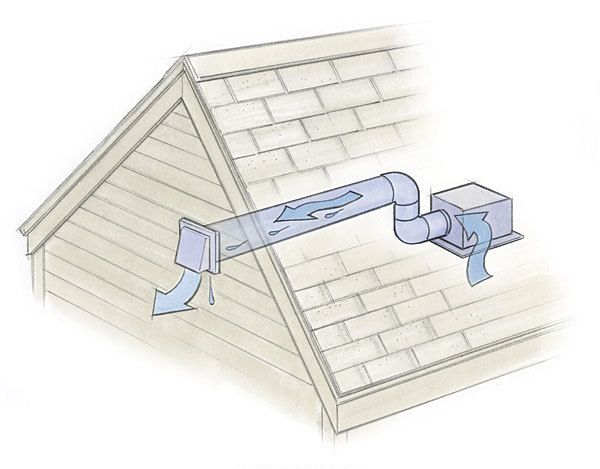How To Prevent Bath-Fan Condensation
Choosing the right vent location, duct type, and length of time you run your bath fan can all help alleviate moisture problems.

Q: My bathroom exhaust fan is vented into the attic above. During the winter, the fan collects condensation that leaks onto the floor below. How can I stop this?
Tim Stockton, Via Email
A: Contributing editor Martin Holladay replies: You have one clear problem, and perhaps a second. First, your bath fan should not be ducted to the attic but to the exterior. Second, your fan and its ductwork may be poorly insulated.
All bath exhaust fans should be ducted with rigid galvanized ductwork to the exterior, ideally to the nearest gable wall. The duct first should rise vertically to an elbow; from the elbow, the duct should slope downward to the gable termination. (Sloping the duct toward the exterior allows condensation to drain away.) Support the duct with duct hangers or stiff wire to prevent sagging.
All duct joints should be secured with sheet-metal screws. It’s not necessary to seal joints of an exhaust duct with mastic.
If your home has a hip roof, you’ll have to install a roof vent. Whether the duct terminates at a gable wall or the roof, you will inevitably have a short section of vertical ductwork where condensation is possible. To minimize chances of condensation, insulate all attic ductwork.
If the floor of your attic is insulated with batts or with loose-fill cellulose or fiberglass, be sure that your exhaust fan is covered with insulation. If your attic floor is insulated with spray foam, then your sprayfoam installer probably protected the exhaust fan before the foam was installed by building a box out of rigid foam. Such a box needs to be big enough to provide an airspace between the fan and the box.
Finally, be sure to operate your bath fan for several minutes after every shower or bath; a crank-operated timer or a time-delay switch makes this easy. Running the fan for a few extra minutes helps to keep the ductwork dry.





